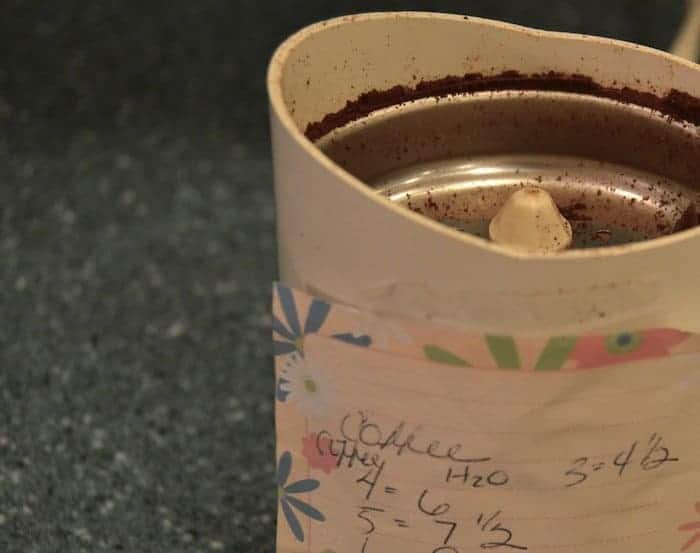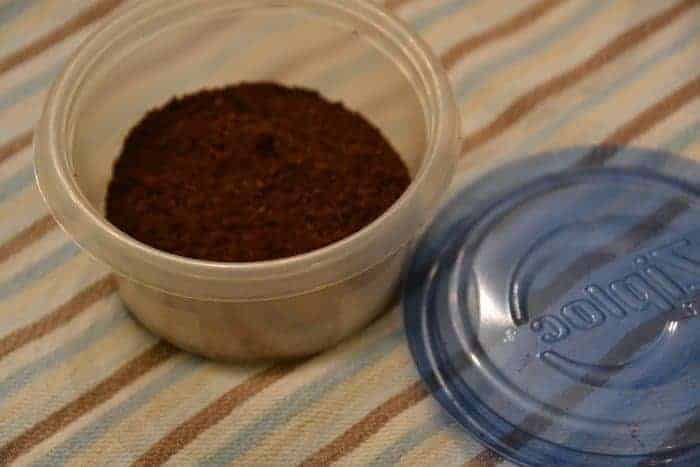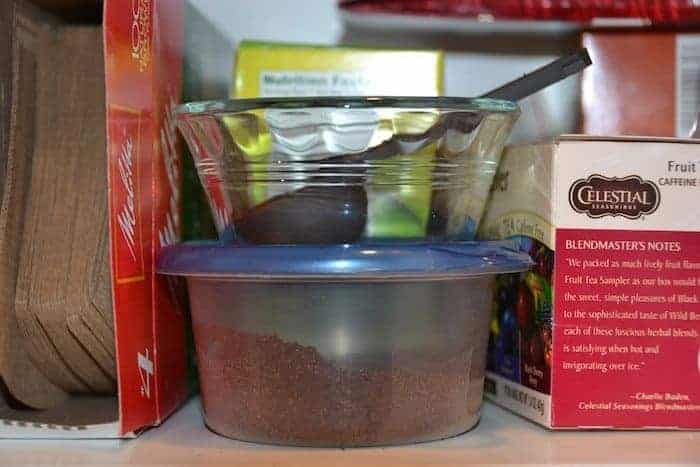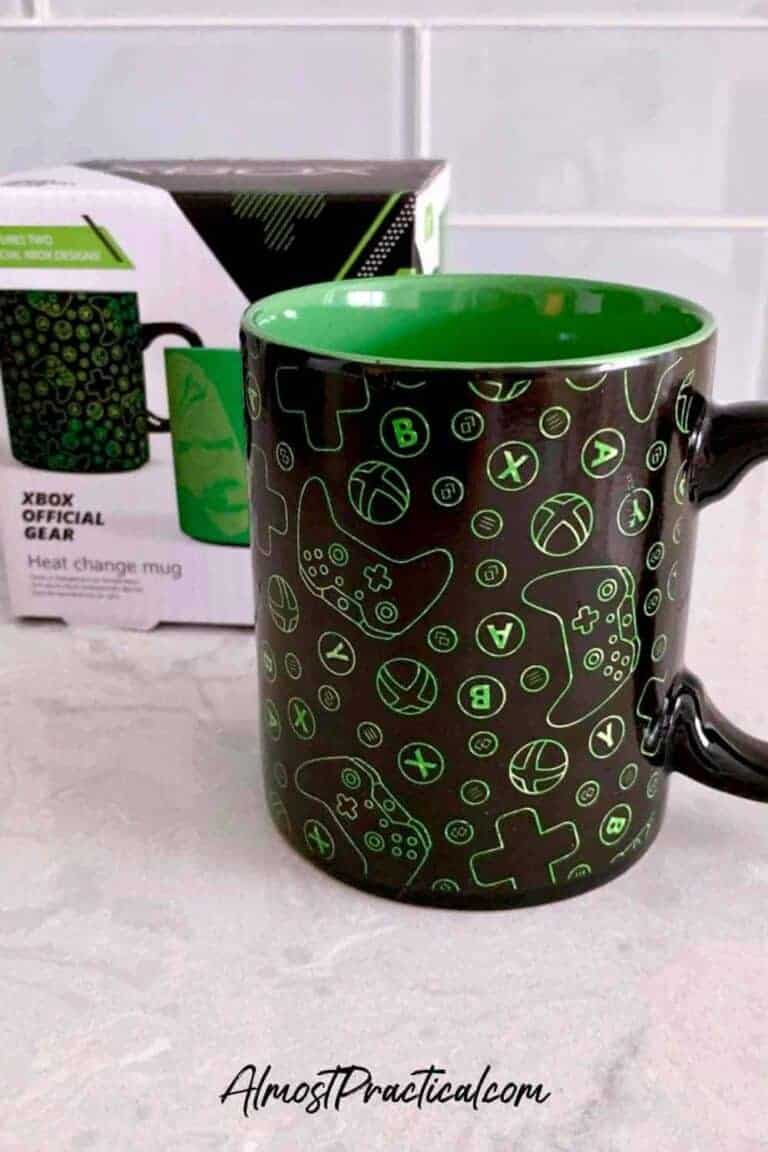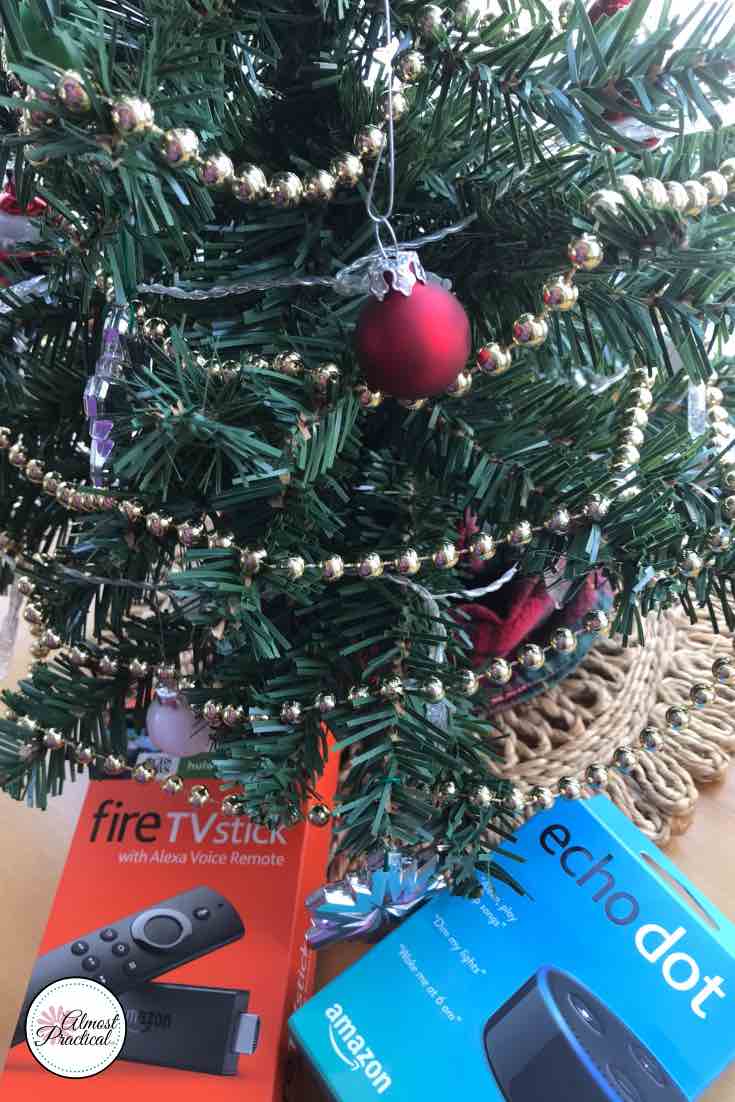How to Make a Consistent Cup of Coffee Using Whole Beans
This post may contain affiliate links which means I make a commission if you shop through my links.
Disclosure Policy
Is the coffee that you make from whole coffee beans inconsistent in taste? This is how to make whole bean coffee taste great every time you brew it.
Like most people, I am pretty finicky about my coffee.
I want a consistent cup from day to day.
With my Keurig coffee maker, I get the same taste from cup to cup because each k-cup is pre-measured and packaged.
But when I want to make coffee the old fashioned way, by grinding whole beans for a drip coffee maker or a percolator, it’s a little harder to get the formula right every time.
The key is figuring out the right quantity of coffee beans and the right grind.
So I created a system that works for me – and I want to share my process with you.
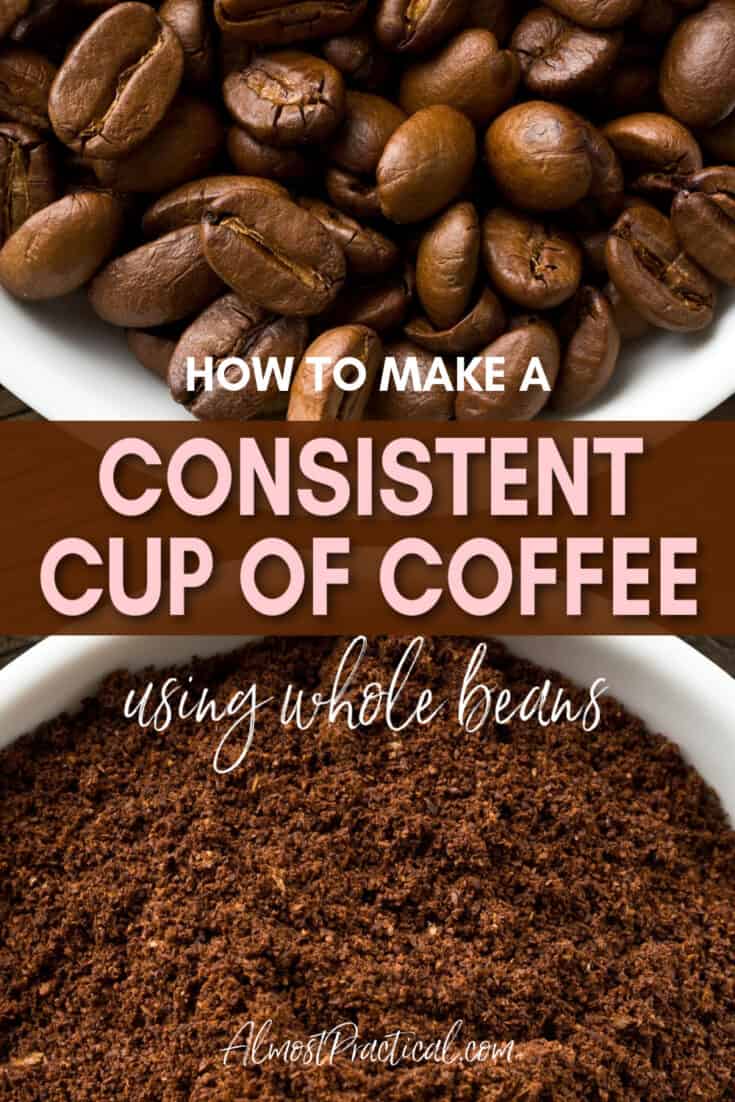
Step 1: Start With a Good Coffee Grinder and a Scoop
Oh, yes – even something as simple as brewing whole bean coffee needs a few tools.
- a coffee grinder
- a coffee scoop or kitchen Scale
- a container for storing the excess ground coffee
Choose a Coffee Grinder
The one pictured here is my very first, old coffee grinder.
There are many more advanced options to choose from. I upgraded to a newer version of what you see above but I have my sights set on a burr coffee grinder with an adjustable setting for the texture of the grinds.
Here are a few choices:

OXO Brew Conical Burr Coffee Grinder
A burr coffee grinder is best type of grinder out there. These have a multifaceted blade that kind of shred up the beans. This one from OXO has a dial to adjust the grind.

Cuisinart Coffee Grinder
This electric coffee grinder from Cuisinart is more affordable than a burr coffee grinder and the grind is depends on long you operate the grinder for. Afew pulses will make a coarser grind and longer pressure will result in a finer grind.

Manual Coffee Grinder with Ceramic Burrs
Another option is using a manual burr coffee grinder. This is often more affordable than an electric version but will require more elbow grease.
Use a Coffee Scoop or a Kitchen Scale
The next thing you will need is a coffee scoop or a kitchen scale.
Ideally, a kitchen scale is best – because if you weigh the coffee then you know you are using the exact same amount each day.
Alternatively, using the same coffee scoop each day allows you to be reasonably consistent with the quantity of coffee grinds that you use.
Here are some choices:

Coffee Scoop, Stainless Steel 1 Table Spoon
The coffee scoop you choose doesn't have to be anything fancy. Just make sure you use the same one every time you make coffee.

Etekcity Food Kitchen Scale
The same goes for the kitchen scale that you choose. All you need is something basic.
Here’s a little tip – if you are lazy like me and don’t want to wash out that coffee scoop every day, find a little bowl to store the scoop in, as well.
Step 2: Weigh or Measure the Coffee Beans
At this point you have to remember to take notes.
Weigh or measure the quantity of coffee beans that you think will make enough grinds for the amount of coffee that you wish to make.
Now WRITE DOWN the weight or measurement of the coffee beans that you used.
To weigh the beans correctly, first weigh an empty bowl, the pour the coffee beans into that bowl and weigh it again.
Next subtract the weight of the empty bowl that you weighed above so you can figure out how much the beans weighed.
If you really have no idea as to much ground coffee you need – you can use this cheat sheet that I use when making ground coffee.
Depending on how much coffee you want to make, you can guesstimate the quantity of whole beans that you will need to grind.
Then I grind the coffee beans and dump the ground coffee into an empty container.
Step 3: Measure the Grinds
Next, measure out how much of the grinds that you want to use.
Ideally you will use all of them, because the purpose of using whole bean coffee is get the freshest grinds.
But as you go through this trial and error process where you are trying to figure out how much coffee to grind, you may end up with extra grinds the first few days. Store these in an airtight container and use them on days that you don’t have time to grind whole coffee beans.
Now go ahead and brew the perfect pot.
Step 4: Put It All Away
Finally, tuck everything – the grinder, your coffee scoop, excess grinds, and your other coffee making equipment – onto a shelf in your cabinet. If you store it all together, you can get set up easily each morning.
Now, I don’t clean out my coffee grinder daily. Once a week I wipe it out because mine is not washable. But if yours is, be sure to clean it periodically.
A Simpler Option to Consider
To streamline the process a bit, you may want to consider using a Grind and Brew coffee maker like this one.
You will still have to work on getting the whole bean coffee measurements right – but then the grinding and brewing all happens in one step.
Do You Use Whole Bean Coffee?
Is whole bean coffee part of your morning routine?
Do you go through a similar process of measuring or weighing the coffee beans before grinding them?
Most importantly, do you keep a little “coffee notebook” and a cheat sheet with your measurements?
Tell me about it in the comments below.


